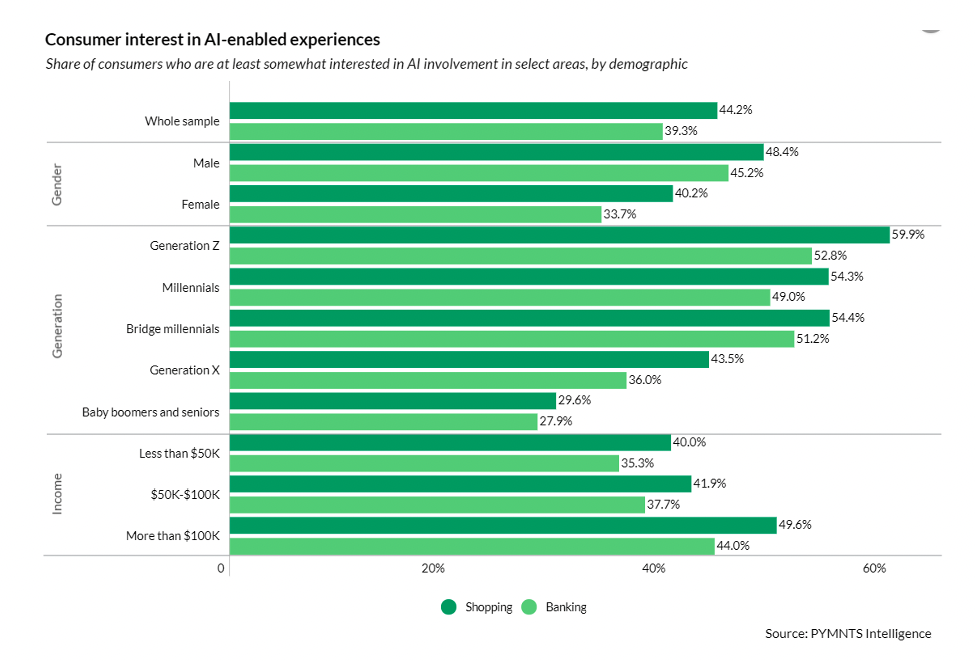Shopping Beats Banking for Consumers Interested in AI-Enabled Experiences

The introduction of artificial intelligence is changing the payments industry, transforming the way consumers pay for goods and services.
AI-enabled payments offer streamlined processes, combat fraud and enhance the overall payment experience for consumers, as detailed in the PYMNTS Intelligence report “AI-Enabled Payments Enhance Customer Options.”
Consumers may already be more engaged in AI-related activities than they realize. For instance, more than 80% of consumers search online using AI, 52% use navigation apps or devices, and 52% receive AI-generated product recommendations, per the study.
Regarding gender, approximately 46% of men and 33% of women are very or extremely familiar with AI, with younger generations exhibiting greater openness and familiarity compared to older generations.
Specifically, Generation Z consumers have a high familiarity with AI, with 65% considering themselves very or extremely familiar with the term. Millennials also exhibit similar rates of familiarity and interest in AI, with 51% considering themselves very or extremely familiar with the technology.
Income level also plays a role, with nearly half of consumers earning over $100,000 annually being very or extremely familiar with AI, despite concerns within this group about potential overdependence on AI.
When it comes to integrating AI technologies into various personal activities, different generational groups exhibit distinct preferences and comfort levels. Gen Z, millennials and bridge millennials show the highest levels of interest in AI-enabled shopping experiences, while Gen X exhibits below-average familiarity with AI. Similarly, interest in AI-enabled banking follows this generational trend.
The overarching trend indicates that consumers, irrespective of age, gender or income, display a greater inclination toward AI involvement in their shopping activities (44%) compared to banking (39%).

Breaking down the data by age, nearly 60% of Gen Z consumers express a keen interest in AI-enabled shopping, whereas only 53% show interest in AI-enabled banking services. This trend holds true across all other age groups as well.
Further nuances emerge when considering specific demographics. Approximately a higher share of women (40%) express at least some interest in AI’s role in shopping compared to banking, a trend also observed among men. Additionally, nearly half of high-income earners prefer AI-enabled shopping experiences, surpassing the 44% who lean toward AI-enabled banking services.
The report further notes that younger consumers, such as Gen Z, are somewhat hesitant to use credit, potentially due to economic conditions and concerns about high interest rates and fees. However, AI has the potential to reverse this trend by helping them to identify the best payment options that align with their goals and preferences.
Companies that embrace AI are influencing not only the way that customers are served today but also the increasing demand for AI-powered payments moving forward.
To guarantee that the advantages of this technology are exploited across a wide customer base, service providers will need to adopt a flexible and inclusive strategy, while actively tailoring their features to accommodate diverse customer preferences.
